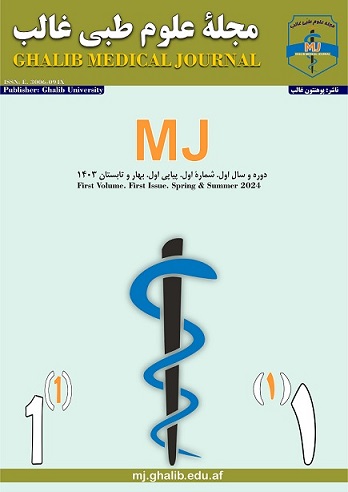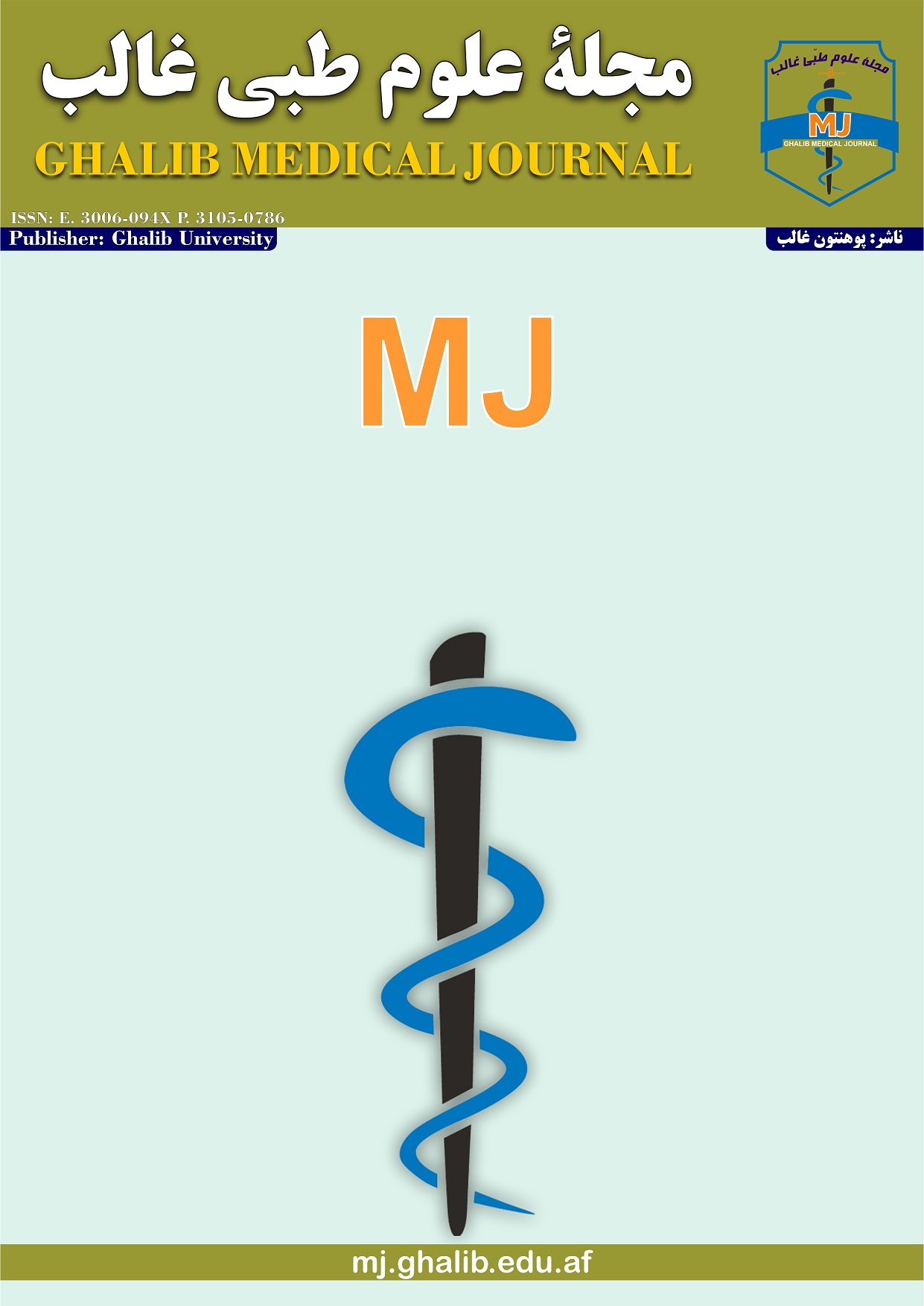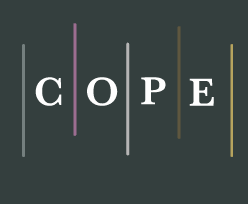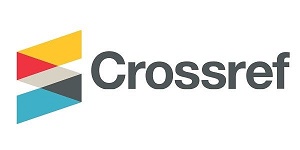The challenges of new-age technologies: Exploring the psychosocial outcomes of emerging technologies on adolescents and young adults - a newly emerging public health challenge
DOI:
https://doi.org/10.58342/ghalibMj.V.1.I.1.2Keywords:
New-age technologies, Challenges, Public health challengeAbstract
Background: Recent years have witnessed revolutionary advancements in new-age technologies, reshaping adolescents' communication and interaction methods with the world around them. The proliferation of social media platforms such as Facebook, Instagram, and Snapchat has raised concerns regarding the role and impact of these tools on the development and behavior of adolescents. This review will examine the psychosocial effects of using social media and new technologies on adolescents. Outcomes related to body image, socialization, and adolescent development will be investigated, and potential solutions for parents and healthcare professionals to protect adolescents from digital threats, especially content related to pornography or explicit material, will be discussed.
Methods: In this research, we conducted a comprehensive and extensive search on the psychological effects of earthquakes. For the writing of this article, we explored databases such as PubMed, Scopus, and Google Scholar, and after applying selection criteria for articles, relevant studies were selected and Zotero was used for referencing.
Results: While social media platforms have gained high popularity, diverse evidence suggests meaningful connections between their usage and adolescents' psychosocial and behavioral issues. An increase in social media use is linked to decreased self-esteem and body satisfaction, heightened risk of cyberbullying, increased exposure to pornographic content, and engagement in risky sexual behaviors.
Conclusion: Given that new technologies significantly impact adolescents daily, there is a pressing need for increased efforts to educate adolescent users and their families about the negative consequences of social media usage. Doctors and parents must take precautionary measures to reduce psychosocial risks and ensure the online safety of adolescents.
References
Lenhart A. Teens, social media & technology overview 2015. 2015;
Brown BB, Larson J, others. Peer relationships in adolescence. Handb Adolesc Psychol. 2009;2(Pt I):74–104.
Burrow AL, Rainone N. How many likes did I get?: Purpose moderates links between positive social media feedback and self-esteem. J Exp Soc Psychol. 2017;69:232–6.
Baumeister RF, Campbell JD, Krueger JI, Vohs KD. Does high self-esteem cause better performance, interpersonal success, happiness, or healthier lifestyles? Psychol Sci Public Interest. 2003;4(1):1–44.
Vogel EA, Rose JP, Roberts LR, Eckles K. Social comparison, social media, and self-esteem. Psychol Pop Media Cult. 2014;3(4):206.
De Vries DA, Kühne R. Facebook and self-perception: Individual susceptibility to negative social comparison on Facebook. Personal Individ Differ. 2015;86:217–21.
Valkenburg PM, Piotrowski JT. Plugged in: How media attract and affect youth. Yale University Press; 2017.
Bányai F, Zsila Á, Király O, Maraz A, Elekes Z, Griffiths MD, et al. Problematic social media use: Results from a large-scale nationally representative adolescent sample. PloS One. 2017;12(1):e0169839.
Collins WA, Steinberg L. Adolescent development in interpersonal context. Child Adolesc Dev Adv Course. 2008;551–90.
Becker AE. Television, disordered eating, and young women in Fiji: Negotiating body image and identity during rapid social change. Cult Med Psychiatry. 2004;28:533–59.
Lee SY. How do people compare themselves with others on social network sites?: The case of Facebook. Comput Hum Behav. 2014;32:253–60.
Valkenburg PM, Koutamanis M, Vossen HG. The concurrent and longitudinal relationships between adolescents’ use of social network sites and their social self-esteem. Comput Hum Behav. 2017;76:35–41.
Liu D, Baumeister RF. Social networking online and personality of self-worth: A meta-analysis. J Res Personal. 2016;64:79–89.
Steinfield C, Ellison NB, Lampe C. Social capital, self-esteem, and use of online social network sites: A longitudinal analysis. J Appl Dev Psychol. 2008;29(6):434–45.
Wilcox K, Stephen AT. Are close friends the enemy? Online social networks, self-esteem, and self-control. J Consum Res. 2013;40(1):90–103.
Brighi A, Melotti G, Guarini A, Genta ML, Ortega R, Mora-Merchán J, et al. Self-esteem and loneliness in relation to cyberbullying in three European countries. Cyberbullying Glob Play Res Int Perspect. 2012;32–56.
Greitemeyer T, Mügge DO, Bollermann I. Having responsive Facebook friends affects the satisfaction of psychological needs more than having many Facebook friends. Basic Appl Soc Psychol. 2014;36(3):252–8.
Clay D, Vignoles VL, Dittmar H. Body image and self-esteem among adolescent girls: Testing the influence of sociocultural factors. J Res Adolesc. 2005;15(4):451–77.
Moradi B, Dirks D, Matteson AV. Roles of sexual objectification experiences and internalization of standards of beauty in eating disorder symptomatology: a test and extension of objectification theory. J Couns Psychol. 2005;52(3):420.
Hinduja S, Patchin JW. Bullying, cyberbullying, and suicide. Arch Suicide Res. 2010;14(3):206–21.
Vandebosch H, Van Cleemput K. Defining cyberbullying: A qualitative research into the perceptions of youngsters. Cyberpsychol Behav. 2008;11(4):499–503.
Davis S, Nixon C. Preliminary results from the Youth Voice research project: Victimization & strategies. Youth Voice Proj. 2010;
Snider M, Borel K. Stalked by a cyberbully. Maclean’s. 2004;117(21/22):76–7.
Hinduja S, Patchin J. Cyberbullying Data. Cyberbullying Research Center. 2016.
Llorent VJ, Ortega-Ruiz R, Zych I. Bullying and cyberbullying in minorities: Are they more vulnerable than the majority group? Front Psychol. 2016;7:1507.
Schenk AM, Fremouw WJ. Prevalence, psychological impact, and coping of cyberbully victims among college students. J Sch Violence. 2012;11(1):21–37.
Pham T, Adesman A. Teen victimization: Prevalence and consequences of traditional and cyberbullying. Curr Opin Pediatr. 2015;27(6):748–56.
Van Geel M, Vedder P, Tanilon J. Relationship between peer victimization, cyberbullying, and suicide in children and adolescents: a meta-analysis. JAMA Pediatr. 2014;168(5):435–42.
Lynam DR, Milich R, Zimmerman R, Novak SP, Logan T, Martin C, et al. Project DARE: no effects at 10-year follow-up. 2009;
Kuntsche E, Knibbe R, Gmel G, Engels R. Why do young people drink? A review of drinking motives. Clin Psychol Rev. 2005;25(7):841–61.
Sabina C, Wolak J, Finkelhor D. The nature and dynamics of internet pornography exposure for youth. Cyberpsychol Behav. 2008;11(6):691–3.
Mitchell KJ, Jones LM, Finkelhor D, Wolak J. Trends in unwanted online experiences and sexting. 2014;
Arrington-Sanders R, Harper GW, Morgan A, Ogunbajo A, Trent M, Fortenberry JD. The role of sexually explicit material in the sexual development of same-sex-attracted Black adolescent males. Arch Sex Behav. 2015;44:597–608.
Rothman EF, Kaczmarsky C, Burke N, Jansen E, Baughman A. “Without porn… I wouldn’t know half the things I know now”: A qualitative study of pornography use among a sample of urban, low-income, black and Hispanic youth. J Sex Res. 2015;52(7):736–46.
Flood M. The harms of pornography exposure among children and young people. Child Abuse Rev J Br Assoc Study Prev Child Abuse Negl. 2009;18(6):384–400.
Bilgrami Z, McLAUGHLIN L, Milanaik R, Adesman A. Health implications of new-age technologies: a systematic review. Minerva Pediatr. 2017;69(4):348–67.
Ybarra ML, Mitchell KJ, Hamburger M, Diener-West M, Leaf PJ. X-rated material and perpetration of sexually aggressive behavior among children and adolescents: Is there a link? Aggress Behav. 2011;37(1):1–18.
Owens EW, Behun RJ, Manning JC, Reid RC. The impact of internet pornography on adolescents: A review of the research. Sex Addict Compulsivity. 2012;19(1–2):99–122.
Häggström-Nordin E, Hanson U, Tydén T. Associations between pornography consumption and sexual practices among adolescents in Sweden. Int J STD AIDS. 2005;16(2):102–7.
Peter J, Valkenburg PM. Adolescents’ exposure to sexually explicit internet material and notions of women as sex objects: Assessing causality and underlying processes. J Commun. 2009;59(3):407–33.
Jacobson C, Bailin A, Milanaik R, Adesman A. Adolescent health implications of new age technology. Pediatr Clin. 2016;63(1):183–94.
Braun-Courville DK, Rojas M. Exposure to sexually explicit web sites and adolescent sexual attitudes and behaviors. J Adolesc Health. 2009;45(2):156–62.
Kingston DA, Malamuth NM, Fedoroff P, Marshall WL. The importance of individual differences in pornography use: Theoretical perspectives and implications for treating sexual offenders. J Sex Res. 2009;46(2–3):216–32.
Lenhart A, Ling R, Campbell S, Purcell K. Teens and mobile phones: Text messaging explodes as teens embrace it as the centerpiece of their communication strategies with friends. Pew Internet Am Life Proj. 2010;
Rice E, Rhoades H, Winetrobe H, Sanchez M, Montoya J, Plant A, et al. Sexually explicit cell phone messaging associated with sexual risk among adolescents. Pediatrics. 2012;130(4):667–73.
Houck CD, Barker D, Rizzo C, Hancock E, Norton A, Brown LK. Sexting and sexual behavior in at-risk adolescents. Pediatrics. 2014;133(2):e276–82.
Dake JA, Price JH, Maziarz L, Ward B. Prevalence and correlates of sexting behavior in adolescents. Am J Sex Educ. 2012;7(1):1–15.
Downloads
Published
How to Cite
Issue
Section
License
Copyright (c) 2024 محمد مسعودی, علی رحیمی, عنایتالله عجاز

This work is licensed under a Creative Commons Attribution 4.0 International License.










